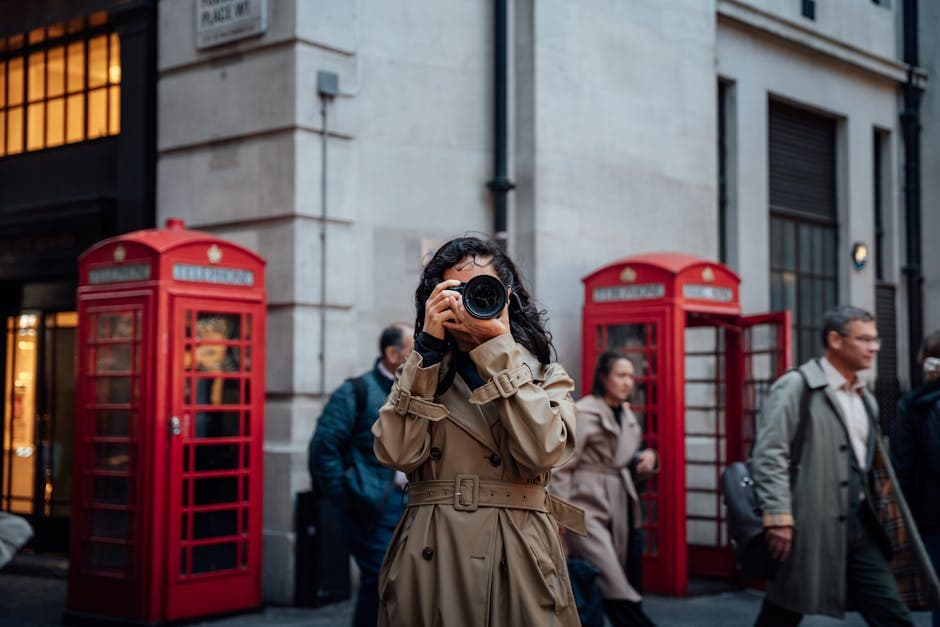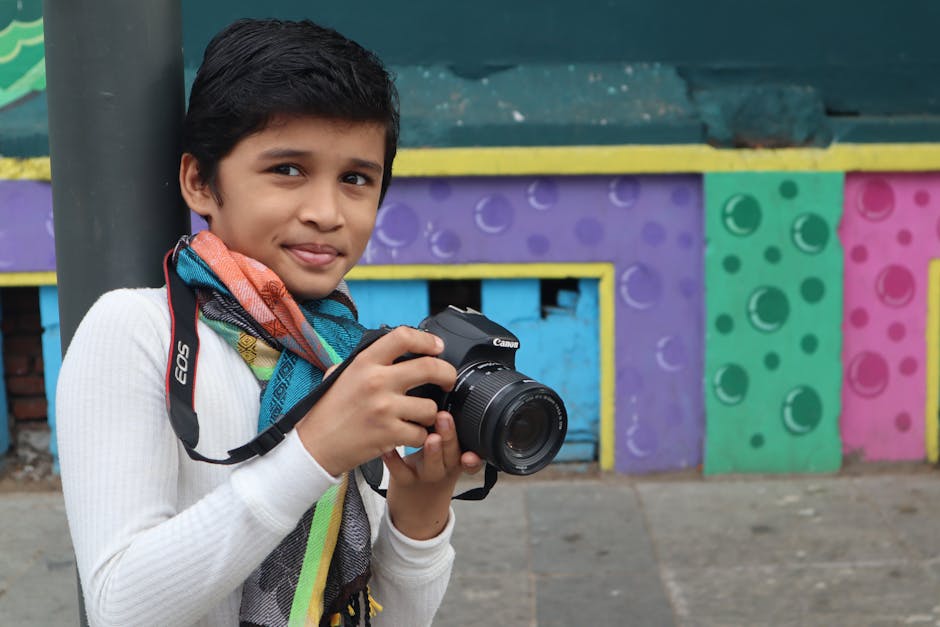Quick Summary
Street photography is the art of capturing candid, unposed moments of everyday life in public spaces. It documents human behavior, urban environments, and the spontaneous interactions between people and their surroundings, typically without staging or directing the subjects.

What is Street Photography? The Complete 2025 Guide
What is Street Photography? The Complete 2025 Guide
Quick Answer: What is Street Photography?
Street photography is the art of capturing candid, unposed moments of everyday life in public spaces. It documents human behavior, urban environments, and the spontaneous interactions between people and their surroundings, typically without staging or directing the subjects.
Table of Contents
- Definition and Core Principles
- History of Street Photography
- Different Styles of Street Photography
- Essential Equipment
- Getting Started: Your First Steps
- Famous Street Photographers
- Common Misconceptions
- Frequently Asked Questions
- Candid moments: Subjects are typically unaware they're being photographed
- Public spaces: Shot in accessible areas where photography is generally permitted
- No staging: Authentic, unposed scenes as they naturally unfold
- Human element: Often features people, though not exclusively
- Storytelling: Each image tells a story or captures a decisive moment
- Embraces unpredictability - You never know what you'll capture
- Requires quick reflexes - Moments happen in fractions of seconds
- Demands social awareness - Understanding human behavior is crucial
- Values authenticity - The goal is to document life as it is
- Celebrates the ordinary - Finding beauty in everyday moments
- Louis Daguerre (1838) - Created one of the first photographs featuring a person on Boulevard du Temple, Paris
- Charles Nègre (1850s) - Documented street life in France with early calotype processes
- John Thomson (1870s) - Captured Victorian London street life
- André Kertész - Pioneer of candid street photography in Paris and New York
- Henri Cartier-Bresson - Coined the concept of "the decisive moment"
- Robert Frank - Revolutionary work "The Americans" redefined documentary photography
- Vivian Maier - Posthumously discovered nanny who captured Chicago street life
- Garry Winogrand - Prolific shooter who captured American social landscape
- Joel Meyerowitz - Early adopter of color in street photography
- Bruce Gilden - Known for confrontational flash photography
- Alex Webb - Master of complex, layered color compositions
- Trent Parke - Australian photographer pushing creative boundaries
- Eric Kim - Modern educator democratizing street photography knowledge
Definition and Core Principles
Street photography is a genre of photography that features subjects in candid situations within public places. Despite its name, street photography doesn't require the presence of a street or even an urban environment. The key elements that define street photography include:
Core Characteristics
What Makes Street Photography Unique
Unlike other photography genres, street photography:
History of Street Photography
Early Pioneers (1830s-1900s)
Street photography's roots trace back to the invention of photography itself. Early pioneers faced technical limitations but laid the groundwork for the genre:
The Golden Age (1920s-1960s)
This period saw street photography emerge as a recognized art form:
Modern Era (1970s-Present)
Contemporary street photography has evolved with technology and social changes:
Different Styles of Street Photography
1. Classic Candid
The traditional approach focusing on unposed moments of human life. Practitioners often work invisibly, capturing scenes without subject awareness.
Key characteristics:
- Natural behaviors and expressions
- Emphasis on timing and positioning
- Often shot from hip or chest level
- Minimal interaction with subjects
2. Street Portraits
While maintaining spontaneity, this style involves brief interaction with subjects:
Approach:
- Quick permission or acknowledgment
- Maintains authentic feel
- Captures personality and character
- Often includes environmental context
3. Urban Landscape
Focuses on the city itself, with or without people:
Elements:
- Architecture and urban design
- How people interact with spaces
- Shadows, reflections, and geometry
- Empty spaces that suggest human presence
4. Abstract Street
Emphasizes form, color, and composition over literal documentation:
Techniques:
- Intentional blur and motion
- Fragmented compositions
- Focus on patterns and textures
- Creative use of reflections
5. Street Fashion
Documents style and self-expression in urban environments:
Focus areas:
- Individual style choices
- Cultural fashion trends
- Subcultures and movements
- Fashion in context of city life
Essential Equipment
Camera Options
1. Mirrorless Cameras
- Pros: Compact, silent shooting modes, excellent image quality
- Popular models: Fujifilm X-T5, Sony a7C II, Leica Q3
- Best for: Discretion and portability
2. DSLR Cameras
- Pros: Robust, long battery life, extensive lens selection
- Popular models: Canon EOS R6, Nikon Z6 III
- Best for: Reliability and versatility
3. Compact Cameras
- Pros: Pocketable, inconspicuous, always ready
- Popular models: Ricoh GR III, Fujifilm X100VI
- Best for: Ultimate discretion
4. Smartphones
- Pros: Always with you, instant sharing, improving quality
- Popular models: iPhone 15 Pro, Google Pixel 8 Pro
- Best for: Beginners and spontaneous shooting
Recommended Lenses
Prime Lenses (Fixed Focal Length)
- 28mm: Wide environmental context
- 35mm: Classic "human eye" perspective
- 50mm: Natural compression, versatile
- 85mm: Compressed perspective, isolation
Zoom Lenses
- 24-70mm: Versatile all-rounder
- 24-105mm: Extended reach
- 70-200mm: Distant candid shots
- Extra batteries - Street photography drains power quickly
- Memory cards - Multiple cards for backup
- Comfortable camera strap - For all-day shooting
- Lens cleaning cloth - Keep optics clear
- Small camera bag - Discrete and accessible
Essential Accessories
Getting Started: Your First Steps
1. Master Your Camera Settings
Recommended starting settings:
- Mode: Aperture Priority (A/Av) or Manual (M)
- Aperture: f/8 for good depth of field
- ISO: Auto ISO (100-3200 range)
- Shutter Speed: 1/250s or faster to freeze motion
- Focus: Single point AF or zone focusing
- Set aperture to f/8 or f/11
- Pre-focus to 2-3 meters
- Use hyperfocal distance charts
- Practice estimating distances
2. Learn Zone Focusing
Zone focusing ensures sharp images without relying on autofocus:
3. Develop Your Eye
Exercises to improve observation:
- Spend time observing without camera
- Study light patterns throughout the day
- Notice interesting characters and behaviors
- Look for geometric compositions
- Practice anticipating moments
4. Start in Comfortable Locations
Best places for beginners:
- Tourist areas (people expect cameras)
- Markets and street fairs
- Public transportation hubs
- Parks and beaches
- Street festivals and parades
5. Overcome Initial Fears
Common fears and solutions:
- Fear of confrontation: Start with distant shots
- Technical anxiety: Practice settings at home
- Creative doubt: Join photo walks
- Legal concerns: Know your rights
- Social anxiety: Work with a friend initially
Famous Street Photographers
Henri Cartier-Bresson (1908-2004)
Known as the father of modern street photography, Cartier-Bresson developed the concept of "the decisive moment" - that split second when all elements align perfectly.
Key contributions:
- Co-founded Magnum Photos
- Pioneered 35mm format for street work
- Influenced generations of photographers
- Emphasized geometry and composition
Vivian Maier (1926-2009)
A nanny who secretly photographed Chicago and New York streets for decades. Her work was discovered posthumously and has since gained worldwide recognition.
Legacy:
- Over 150,000 photographs discovered
- Master of self-portraits
- Documented mid-century American life
- Inspired discussions about artistic recognition
Garry Winogrand (1928-1984)
Prolific American street photographer who captured the social landscape of the 1960s-80s, leaving behind thousands of undeveloped rolls of film.
Style elements:
- Tilted horizons and dynamic compositions
- Captured American social issues
- Shot constantly and instinctively
- "I photograph to see what things look like photographed"
Joel Meyerowitz (1938-present)
Pioneer of color street photography when black and white dominated the genre. His work spans from dynamic NYC streets to quiet Cape Cod landscapes.
Innovations:
- Early adoption of color film
- Large format street work
- Documented Ground Zero after 9/11
- Influential educator and author
Bruce Gilden (1946-present)
Known for aggressive, in-your-face flash photography that captures raw, unfiltered moments of urban life.
Distinctive approach:
- Close-range flash technique
- Confrontational style
- Focus on society's margins
- Member of Magnum Photos
Common Misconceptions
Myth 1: "You Need Expensive Equipment"
Reality: Many iconic images were shot with basic cameras. It's about vision, not gear. Start with what you have.
Myth 2: "It Must Be Shot on Streets"
Reality: Street photography can happen anywhere public - beaches, malls, parks, public transport, museums.
Myth 3: "Black and White is Required"
Reality: While traditional, color street photography is equally valid and increasingly popular.
Myth 4: "You Can't Include Posed Elements"
Reality: Brief interactions and environmental portraits can be part of street photography.
Myth 5: "It's Illegal to Photograph Strangers"
Reality: In most countries, photography in public spaces is legal, though ethics and local laws vary.
Frequently Asked Questions
Is street photography legal?
In most democratic countries, photography in public spaces is protected as free expression. However:
- Always check local laws
- Respect privacy expectations
- Consider cultural sensitivities
- Commercial use may require releases
- Some locations have restrictions
Do I need permission to photograph people?
Legal perspective: Usually not in public spaces Ethical perspective: Consider the context and impact Practical approach:
- Smile and acknowledge if noticed
- Delete if requested
- Be respectful and empathetic
What's the best camera for street photography?
The best camera is the one you have with you. However, ideal features include:
- Compact size
- Fast autofocus
- Good high-ISO performance
- Silent or quiet operation
- Quick startup time
- Start with distant shots
- Photograph in busy areas
- Focus on backs and silhouettes
- Join street photography groups
- Practice regularly to build confidence
- Remember most people don't notice or care
How do I overcome fear of shooting strangers?
Should I shoot in RAW or JPEG?
RAW advantages:
- Maximum editing flexibility
- Recover highlight/shadow detail
- Non-destructive editing
JPEG advantages:
- Smaller file sizes
- Faster workflow
- Forces better initial decisions
Recommendation: Shoot RAW+JPEG if storage allows
What are the best settings for street photography?
General guidelines:
- Aperture: f/5.6-f/11 for adequate depth
- Shutter: 1/250s minimum for walking subjects
- ISO: Auto ISO 100-3200/6400
- Focus: Single point or zone
- Mode: Aperture Priority or Manual
- Study masters but don't copy
- Shoot consistently
- Review and critique your work
- Experiment with techniques
- Find themes that resonate
- Be patient - style develops over years
- Stay calm and polite
- Explain you're doing art/documentary work
- Offer to delete if genuinely upset
- Know your legal rights
- Avoid confrontation
- Move on if situation escalates
How do I develop my own style?
What should I do if confronted?
Conclusion
Street photography is more than just taking pictures in public spaces—it's about observing life, capturing fleeting moments, and creating visual stories that reflect our shared human experience. Whether you're drawn to the decisive moment, interested in social documentation, or simply love the unpredictability of the streets, this genre offers endless opportunities for creative expression.
The beauty of street photography lies in its accessibility. You don't need expensive equipment or exotic locations. Your own neighborhood offers countless photographic opportunities. The key is to get out there, observe carefully, and be ready when moments unfold.
As you begin your street photography journey, remember that it's a practice that rewards patience, persistence, and respect for your subjects. Every photographer started as a beginner, and even masters continue learning with each shot.
Now grab your camera—or smartphone—and hit the streets. The perfect moment is waiting.
---
Ready to take your street photography to the next level? Download the InTheStreets app to connect with fellow photographers, participate in challenges, and share your best shots with a community that understands your passion.
*Featured image: "Photographer captures London street scene" by Mike González via Pexels*